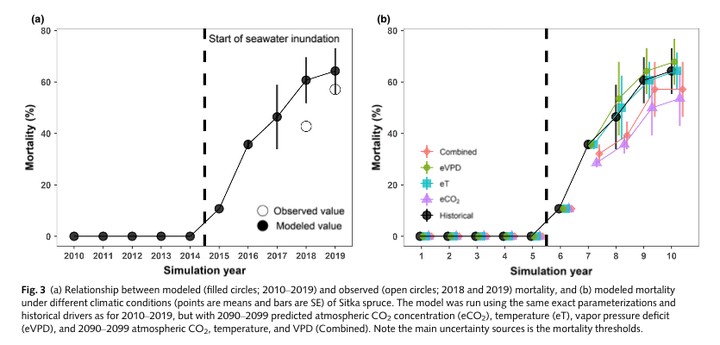The influence of increasing atmospheric CO2, temperature, and vapor pressure deficit on seawater-induced tree mortality

Abstract
Increasing seawater exposure is killing coastal trees globally, with expectations of accelerating mortality with rising sea levels. However, the impact of concomitant changes in atmospheric CO2 concentration, temperature, and vapor pressure deficit (VPD) on seawater-induced tree mortality is uncertain. We examined the mechanisms of seawater-induced mortality under varying climatescenarios using a photosynthetic gain and hydraulic cost optimization model validated against observations in a mature stand of Sitka spruce (Picea sitchensis) trees in the Pacific Northwest, USA, that were dying from recent seawater exposure. The simulations matched well with observations of photosynthesis, transpiration, nonstruc- tural carbohydrates concentrations, leaf water potential, the percentage loss of xylem conduc- tivity, and stand-level mortality rates. The simulations suggest that seawater-induced mortality could decrease by c. 16.7% with increasing atmospheric CO2 levels due to reduced risk of carbon starvation. Conversely, rising VPD could increase mortality by c. 5.6% because of increasing risk of hydraulic failure. Across all scenarios, seawater-induced mortality was driven by hydraulic failure in the first 2 yr after seawater exposure began, with carbon starvation becoming more important in sub- sequent years. Changing CO2 and climate appear unlikely to have a significant impact on coastal tree mortality under rising sea levels.